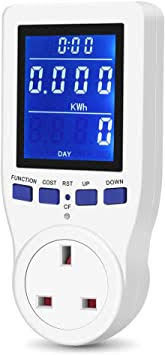So we've been renovating (virtually new everything) a 1930s semi that hasn't been modernised since it was built and hadnt been lived in since the 70s. Naturally a full rewire was high on the agenda which is 90% complete now, but my suspicion began when the 3000W fan heater I bought seemed not to be chucking out much heat. At first I thought nothing of it putting it down to a poor quality appliance. But when a new kettle I tried took around 7minutes to boil, I started pondering if there was a fault somewhere causing a limit to max power these appliances were generating/drawing. I had the plugs tested and they are producing 230v but before researching ohms law, I suspected a resistance issue. To double check, I took the heater home and plugged it in and hey presto, belting hot heat. I am awaiting an updated fuse board from Northern Power, which I'm sure will fix the issue but, I wanted to rule out any problem with my installation before I sign off with the sparky ideally.
The only other info I have is the original power was a shared supply to ours and next door and I wondered if some sort of phase drop was present grid side of our board. Is my next logical step testing resistance between board and consumer unit? Can you do that with a normal multimeter? My electrician who looks to have done a fantastic installation seems to be brushing it off like there's no problem but the house will be electrically heated and rented out so I can't have 2k worth of underperforming rads getting overworked.
All ideas, practical and theoretical appreciated. Sorry for essay.

